Whether a business is engaged in domestic or international trade – and, as a result, in domestic or international marketing strategy – there are a multitude of factors to consider. Across both markets, there are shared and disparate factors for businesses and brands to consider.
What is meant by the term domestic market?
The term domestic market – also commonly known as ‘home market’, ‘local market’ and ‘internal market’ – refers to goods and services that are bought and sold within the borders of a single country. Businesses which operate within domestic markets are also based within that single country: for example, a UK-based company that only trades throughout the UK.
There are various reasons why companies may find domestic trading more attractive. It often features simpler distribution and sales channels, business leaders may possess solid understanding of the home market, as well as benefit from well-established brand positioning and a stable customer base. Some companies – particularly smaller ones – may simply have met their performance objectives within the domestic market and find it serves their business needs.
However, there are plenty more who need to turn their attention further afield in order to secure the growth they require: for that, they need to trade within international markets.
What are international markets?
An international market is one that lies outside of the international borders of a company’s own country of citizenship. A business which operates in international markets is involved in selling goods and services outside of its home country and national boundaries: for example, a UK-based company that expands its trading into countries throughout the European Union in order to access new markets and buyers.
In 2022, many of the former barriers to operating in foreign markets – exorbitant shipping costs, lack of adequate technology, and issues with communication – have become more navigable. International trade is big business – the World Trade Organization expects global trade to increase 4.7% in 2022, and the United Nations Conference on Trade and Development expects trade for 2021 to total $28 trillion – which means international marketing is also big business.
There are numerous benefits to breaking into international markets, including:
- accessing new markets and expanding customer base
- building resilience against economic downturns by diversifying assets
- increasing competitive advantage.
Similarities and differences in domestic and international marketing
Business leaders and marketing professionals who understand the key differences and similarities between domestic and international marketing will reach audiences and launch campaigns with greater efficacy.
Domestic marketing typically involves:
- smaller business scope within more local target markets
- more control over marketing activities and greater familiarity with markets
- less financial investment
- use of national language(s) and currency
- adherence to local government, governance and legal considerations.
International marketing typically involves:
- wider business scope and geographical target markets
- less control over marketing activities and lack of familiarity with markets
- greater financial investment
- diverse currencies, potential language barriers and greater cultural differences
- adherence to global government, governance and legal considerations.
Despite these main differences, both markets also share common factors. For example, across both, business must juggle risk factors – such as vulnerability to political and economic shifts – which can affect market conditions and create supply chain complications. Both necessitate a focus on integrated marketing efforts and marketing strategies.
While the specifics may differ, businesses who trade domestically share many of the same issues as global enterprises – just on a different scale. As an example, whether local or global, companies are likely to invest in social media – whose impact, reach and potential cannot be understated – to support their marketing campaigns. However, aspects such as budget, available technology, channels, and marketing labour force may vary considerably.
Scaling local brands and businesses to perform in international markets
When executed correctly, marketing activities can be scaled to ensure that customers in different countries – and continents – connect and engage with a brand or business. However, issues can – and do – arise. How can marketers ensure that budgets are well-spent, and marketing efforts well-received? Will a concept or campaign resonate with target audiences across multiple markets? Has the right language or cultural reference been used?
This is where data, market research, digital marketing, diverse, global teams, and international perspective are critical: without them, marketing efforts are likely to fall short of the mark. Global campaigns require oversight of multiple stakeholders, cultural considerations, local regulations, and much more.
Freedman, experts in brand-scaling and global marketing, outline what they consider to be fundamental starting points for brands wishing to market internationally:
- Global mindset. A marketing strategy that is effective in a domestic market may not necessarily translate to international markets. Each new market entered should be researched and evaluated – including audience, tactics, pricing, product offering and competition – and the strategy adapted accordingly. For example, Coca-Cola, industry leader for over 125 years, sells in diverse markets worldwide. The brand has produced thousands of varied, region-specific products and packaging designs; rather than opting for a one-size-fits-all approach, Coca-Cola’s marketers understand the need to tailor their offering to individual demographics and lifestyles depending on the market.
- Culture-bound creativity. A concept that provokes a certain emotion or reaction in one audience or culture may not necessarily be received similarly elsewhere. Extensive market research is required, examining factors such as gender balance, religion, politics, history and societal codes, before products, service offerings and campaigns are designed.
- Choice of language and visuals. Misguided marketing can cause significant damage to brand reputation and sales. It is critical that the right people – with appropriate cultural understanding and a keen awareness of localised markets – create the marketing copy, or are involved in the copyediting and proofing process. Too many brands have fallen foul of this over the years: at best, it leads to amusement – at worst, offence. Similarly, any imagery or audio-visual marketing materials should be assessed to ensure they will be received appropriately by local audiences.
- Communication across globalised teams. Business leaders should take steps to ensure there is frictionless, strong communication between central and localised teams. Communication and sharing of expertise must be prioritised in order to capture feedback, track trends, gauge and monitor success, make considered, data-driven decisions, and address and troubleshoot issues in real-time.
- Understanding the rules. Businesses must abide by regulations and regulatory bodies, legal parameters, local authorities, and other rules and procedures in a given target market.
Develop the skills to succeed on the international stage
Join the University of Sunderland’s online International MBA programme, designed for individuals looking to progress in strategic and cross-cultural roles in complex, global organisations.
You’ll acquire the skills and know-how to confidently evaluate, analyse and act decisively at the highest levels, navigating ever-evolving environments and taking advantage of business opportunities. Our flexible programme provides a solid grounding in operational fundamentals, whether you’re dealing with domestic business or international business, including: leadership and management; business strategy; international trade and marketing; financial management; big data analytics; and much more.





